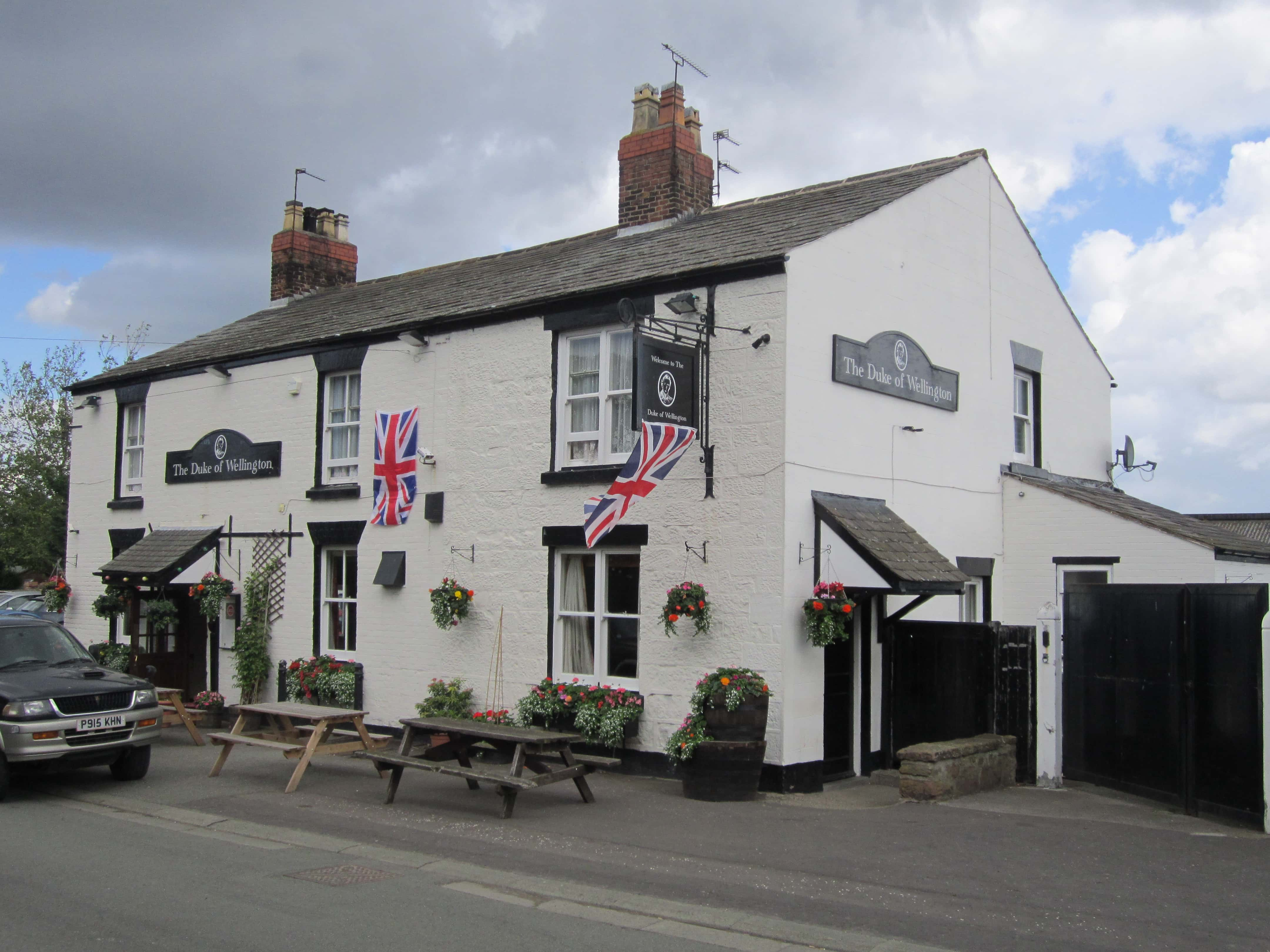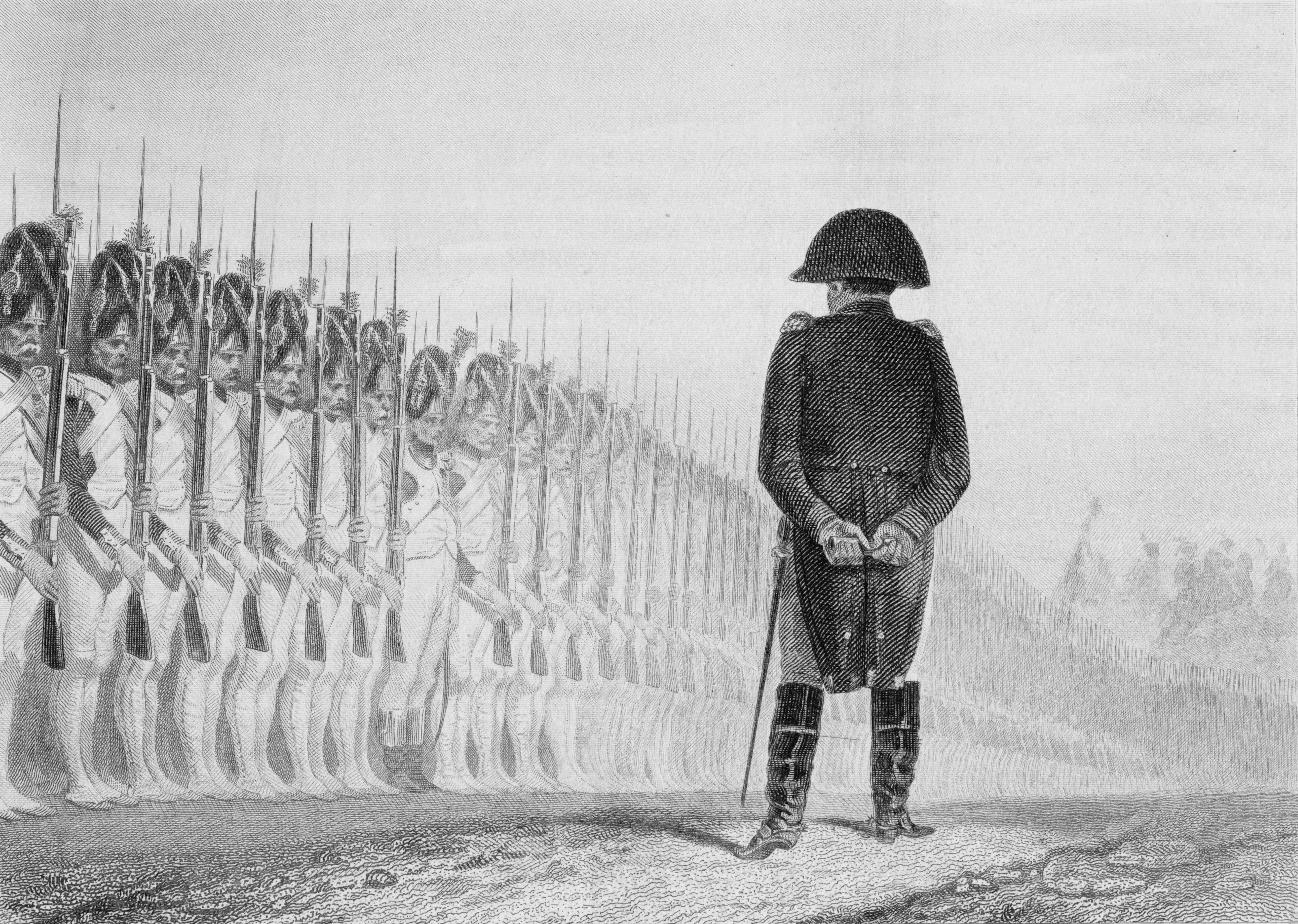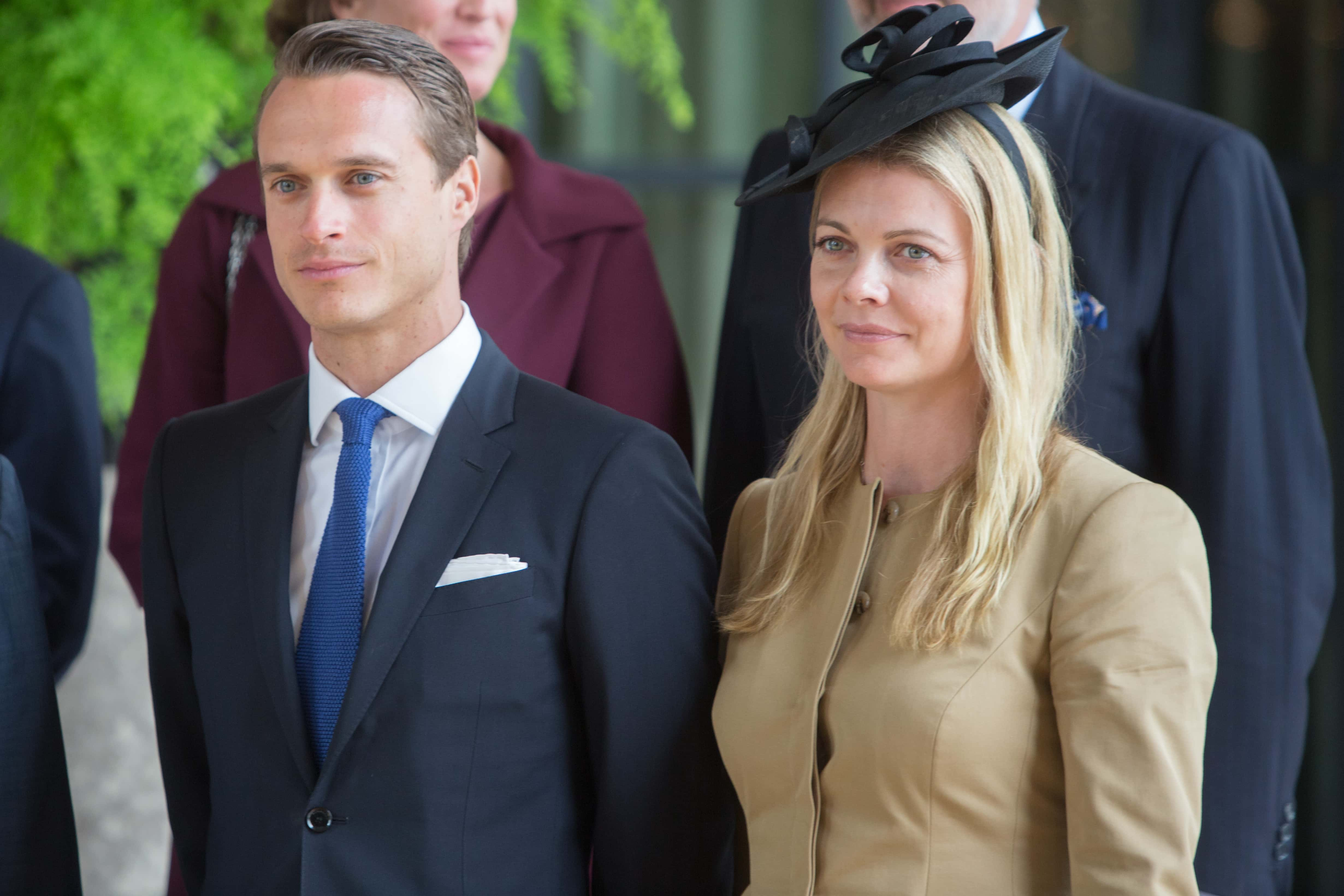With his decisive victory over Napoleon at Waterloo, the Duke of Wellington became an icon of 19th century England. Like Horatio Nelson, his naval counterpart, the “Iron Duke” was synonymous with courage, stoicism, and duty. Yet, away from the battlefield, this embodiment of conformist British morality had a host of peculiar habits and an insatiable appetite for women. Here are 42 noble facts about the Duke of Wellington.
Facts About The Duke Of Wellington
1. Horse Sense
Arthur Wellesley, the first Duke of Wellington, was born on the first of May, 1769. Though he would become an icon of the British Empire, the Duke was actually born in Dublin, Ireland. This fact caused Wellington great embarrassment, and prompted him to remark, “Because a man is born in a stable, it does not make him a horse.” (It should come as little surprise to know that Wellington isn't very popular with the Irish).
2. House Sitter
Wellington’s antipathy to the Irish did not prevent him from entering the Irish Parliament. Running on a pro-English, anti-independence platform, Wellington was elected MP for Trim, County Meath, in 1879.
 Wikimedia Commons, Francis Wheatley
Wikimedia Commons, Francis Wheatley
3. The Name Game
At his birth, Wellington’s name was, in fact, Arthur Wesley. He changed it to Wellesley in 1798, just as his military career was skyrocketing, thinking it appeared more refined.
4. Military School
Just as his brothers had been, Wellington was sent to study at Eton. He was socially awkward, and his academic performance left something to be desired. Convinced he would never amount to anything, his mother withdrew him from Eton and sent him to a French Military Academy.
5. Breaking Up The Band
Wellington initially held aspirations of becoming a musician, but he burnt his violin in a fit of anger when his marriage proposal to Kitty Pakenham was rejected by her brother, the Earl of Longford. From that point on, the military was his only true muse.
6. Buying A Job
His dreams of musical stardom shattered, Wellington borrowed some money from his brother and used it to buy himself the rank of Lieutenant-Colonel with the 33rd Regiment (because that was something you could do back then).
7. How Do You Like Me Now?
After a brief detour in the Netherlands, Wellington was shipped to India, where he spent ten years quashing insurrections and amassing a personal fortune of £42,000, which was nothing to sniff at back then. With the new rank of General and wealth in his favor, Wellington once again asked for Kitty Pakenham’s hand in marriage, and it was happily granted this time. Too bad you can't un-burn a violin.
8. Conehead
Glaswegians have their own creative way of honoring the Duke. The statue of Wellington on horseback that stands in front of Glasgow’s Royal Exchange can usually be found wearing a traffic cone on its head. Placing a cone on the Duke’s head has been a popular prank since the 1980s, with some even using it as an opportunity to raise awareness of political or community issues. The City of Glasgow discourages the practice, however, and spends £10,000 every year removing the cones.
9. Co-Inn-cidence
On his return home from India, Wellington’s ship stopped briefly at St. Helena, the same remote island where his arch-nemesis, Napoleon Bonaparte, would be exiled years later.

Sign up to our newsletter.
History’s most fascinating stories and darkest secrets, delivered to your inbox daily. Making distraction rewarding since 2017.
10. Buckle Up
Back in Europe, Wellington took part in numerous battles around Portugal, the Netherlands, and Denmark. Unlike other commanders of the time, Wellington freely rode into the frontlines with his troops. This was risky, however. At the Battle of Orthez in 1814, allegedly while teasing one of his men for being hit with a stray bullet, Wellington was struck in the leg by a musket ball. Luckily for him, the ball ricocheted off the sword on his hip, sparing him from serious injury.
11. Bar-Hopping
There are many things named after the Duke of Wellington: the capital of New Zealand; a mountain in New York; a beef dish that he probably never ate. But the most impressive honor is the nearly 100 pubs named after the Duke of Wellington in England alone. It’s a fitting tribute to a man who ate only cold meat and bread, but always washed it down with the most expensive wine available.
12. Dancing Fool
Wellington didn't regularly show great emotion on the battlefield, but when he did, he made it count. When it became clear that he would earn the victory at the Battle of Toulouse, he broke into a flamenco dance.
13. Making A Name For Himself
It was after the victory at Toulouse that Arthur Wellesley earned the title of Duke of Wellington in the County of Somerset. He was also given the title of Marquess of Douro.
14. Where Did You Sleep Last Night?
Wellington is most famous for his victory over Napoleon at Waterloo. The battle was actually fought at Braine-l’Alleud, just south of Waterloo, but Wellington had established a pattern of naming his battles after the place he had spent the night before the battle, hence Waterloo.
15. Close Call
Wellington was almost killed at Waterloo. A cannonball flew straight at him and his horse, narrowly missing and killing the soldier beside them.
16. Robin Hood
In 1961, bus driver Kempton Bunton stole a portrait of Wellington, painted by Francisco Goya and valued at $390,000. He offered to return it on one condition: all poor people got TVs. In those days, you needed a license to purchase and install a television in England; Bunton wanted $140,000 to buy licenses for low-income people. Bunton’s lawyers later argued that, since he had no intention of keeping the painting, he could not be convicted of theft.
17. Doctored Image
Bunton returned the painting in 1965 and served a three-month sentence, but by then his charitable efforts had already become a part of British pop culture history. In the 1962 James Bond film Dr. No, the portrait can be seen hanging in Dr. No’s lair, a sly nod to the as-yet-unidentified thief.
18. Time Travel
Waterloo sealed Wellington’s place in history, but he almost missed it. Before the battle, Wellington had been asked to instead go to Canada, to lead the British in the War of 1812. Wellington plead his case and was able to stay in Europe, no doubt explaining that, since it was already 1814, the War of 1812 would be over already by the time he got there.
19. What’s The Point?
Sorry, we just can’t resist a good 1812 joke. Wellington did refuse to go to Canada, but it was because he believed the War of 1812 was destined to end in a stalemate, and he would therefore be more useful in Europe. Wellington’s prediction proved more or less correct, with neither the British or the Americans ceding any territory in the conflict.
20. Going Out On Top
Wellington retired from army life after Waterloo. He fought in 60 battles and never lost one, though some attribute his streak to his willingness to retreat rather than risk heavy casualties.
21. He Who Laughs Last
Years later, Wellington ran into some French generals at a party in Vienna. They had been at Waterloo and turned away from him immediately. The hostess apologized for their rudeness, but Wellington brushed it off and delivered one of history's sickest burns: “I have seen their backs before, madam.”
22. Tough Crowd
Despite his many victories, Wellington remained an unpopular figure in England. The public considered him aloof and rude; the government, despite all evidence to the contrary, doubted his military abilities. The future King George IV even admitted he liked Napoleon better.
23. Old Habits Die Hard
Though he was retired from the army, Wellington had a hard time giving up some old habits. Despite the fact that he now lived in a literal castle in the English countryside, Wellington continued to sleep in a camp bed, rising before dawn every morning and enjoying his usual meal of cold meat and bread.
24. A Stuffed Horse
Wellington himself may have been ascetic in his practices, but that didn’t stop him from spoiling his beloved horse, Copenhagen. The thoroughbred racehorse, whom Wellington rode at Waterloo, died when the general fed him too much cake. Isn't that how we all hope to go?
25. Hoofing It
Prior to Copenhagen’s burial, Wellington discovered that someone cut off one of his beloved horse’s hoofs. The desecration infuriated the Duke. A farmer later spotted the hoof for sale for three shillings; he bought it and returned it to the Duke, whose son had it made into an inkstand.
26. Fashion Forward
At a time when the British army favored bright red coats and foot-high shako hats, Wellington’s style of dress was conspicuously inconspicuous. In battle, Wellington eschewed decorations and medals and wore dark clothes so as not to be readily identified by the enemy. He also kept his hair cut short: it was cleaner and easier to maintain than the powdered wigs his fellow officers wore. Wellington’s ideas of practicality and camouflage would not catch on with the British army until World War I.
27. For A Rainy Day
Wellington’s footwear also made a splash. Wellington wore custom-made leather boots, designed to be suitable for all situations, military or formal, and weatherproofed for the rain. They became even more prominent when British fashion icon Beau Brummell decided he needed his own pair of Wellington boots. Now made of rubber, the “Wellie” is still the boot of choice in rainy weather.
28. Holy War
In 1828, Wellington became the Prime Minister of the United Kingdom. His most notable accomplishment as Prime Minister was the Catholic Relief Act, which gave equal rights to Catholics. It was a deeply unpopular move; one critic so insulted Wellington that the former General challenged him to a duel.
29. Hypocrisy
Wellington did not extend his religious tolerance to everyone, however. When a bill to grant full religious liberties to Jewish citizens was introduced in 1833, Wellington voted against it. The bill failed to pass.
30. Life’s A Riot
Riots broke out in 1831. Some workers were dissatisfied with the changes brought by the Industrial Revolution, others were upset that Wellington refused to support a Reform Bill which would have extended voting rights to more citizens. The target of much public anger, Wellington earned a vote of non-confidence from Parliament.
31. Who’s The Boss?
Wellington had a hard time adjusting to the differences between politics and the army. He once said of his cabinet, “An extraordinary affair. I gave them their orders and they wanted to stay and discuss them!”
32. In Da Club
Wellington was a member of London’s exclusive Almack’s Club. Membership to the club was granted by a group of wealthy society women, all of whom adored Wellington. Even so, Wellington was twice refused entry into the club, once because he was seven minutes late, and another time because he was wearing black trousers. Can you even imagine? Black trousers?!
33. A Final Insult
Wellington kept an erotic portrait of Napoleon’s sister hanging in his bedchamber.
34. A Hero’s Death
The Duke of Wellington died of the aftereffects of a stroke on 14 September, 1852. He was 83 years old. As one of England’s greatest military heroes, he was given a state funeral, and is buried beside Horatio Nelson in St. Paul’s Cathedral, in London.
35. Going Off The Rails
Wellington’s body was brought to London on a train. This is somewhat ironic, as Wellington hated traveling by rail, having witnessed a man run over by a locomotive in 1830.
36. Plus Ҫa Change
Today, the Duke of Wellington’s direct descendant, Arthur Mornington, Earl of Mornington (the current Duke of Wellington's son) works as a partner for the private investment firm Orkney Capital. The direct descendant of Napoleon, Jean-Christophe, Prince Napoléon, is a partner at rival firm Advent International.
37. Ladies’ Man
Wellington was married, unhappily, to Kitty Pakenham, the daughter of an Irish lord. Frequently away from home, Wellington carried out numerous affairs. Among his mistresses were Harriette Wilson (a famous courtesan of the day), Russian princess Dorothea Lieven, and allegedly even two of Napoleon’s former mistresses.
38. Second Thoughts
Wellington revealed that the intervening ten years between when he'd first proposed and when they finally married played a large part in his souring on his wife. In that time, she had fallen ill, and her once-great beauty was faded. Wellington even cruelly confided in his brother his disappointment that Kitty had “turned ugly.” Not a great look, Arty.
39. Stop Snitching
When news broke that Harriette Wilson was planning to publish her memoirs, Wellington received a letter from her publisher, offering to leave his name out of it (for a small fee, of course). Wellington’s reply was “Publish and be damned!”
40. Riding The Coach
Though he developed a reputation as a stern disciplinarian, Wellington could be surprisingly wild among his friends. One mistress disclosed that Wellington had a favorite party game: he and another officer would put on horse harnesses and drag ladies around their manor in a wild race. They called this game “Riding the Coach.”
41. War Is Hell
The Duke of Wellington was known as one of England’s fiercest and most proficient military men, but he did not love war. After the Battle of Waterloo, he is said to have wept while reading the list of the dead. Wellington later said, “Believe me that nothing, excepting a battle lost, can be half so melancholy as a battle won.”
42. Stiff Upper Lip
Wellington was careful to hide his emotions on the battlefield, however. So the story goes, when a British Field Marshall named Lord Uxbridge had his leg destroyed by a cannonball, he cried out, “By God, Sir! I’ve lost my leg,” and Wellington calmly replied, “By God, Sir! So you have.”


















































